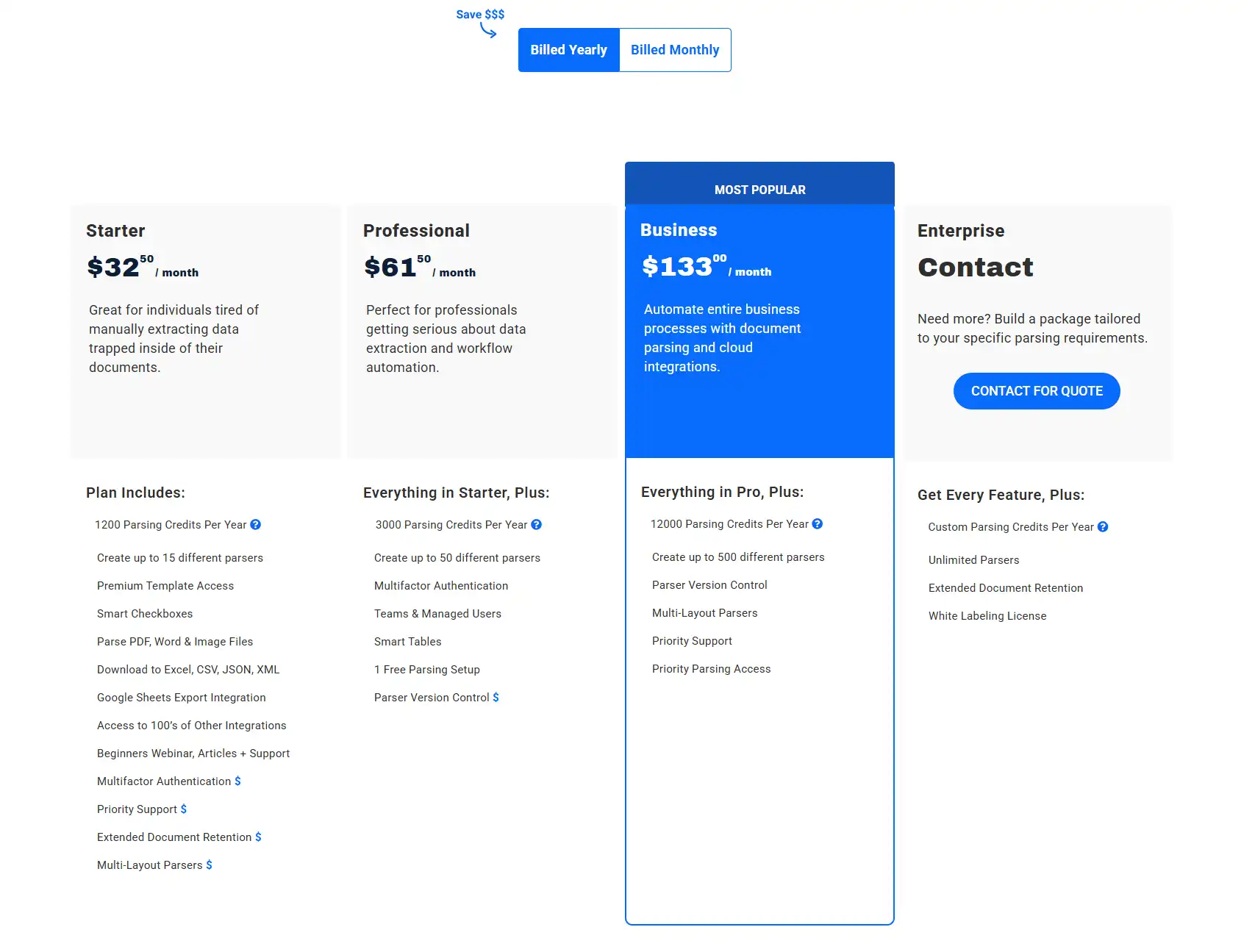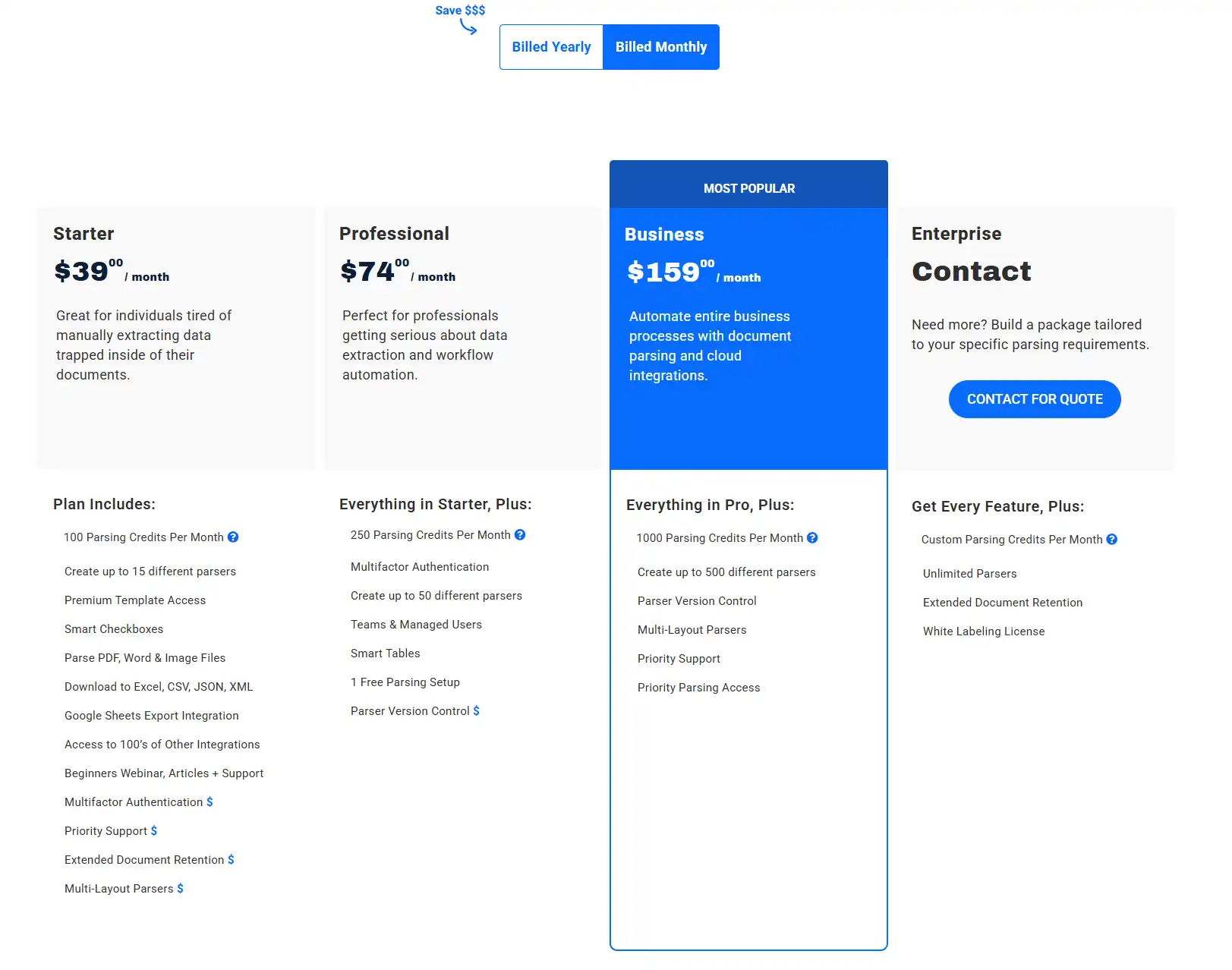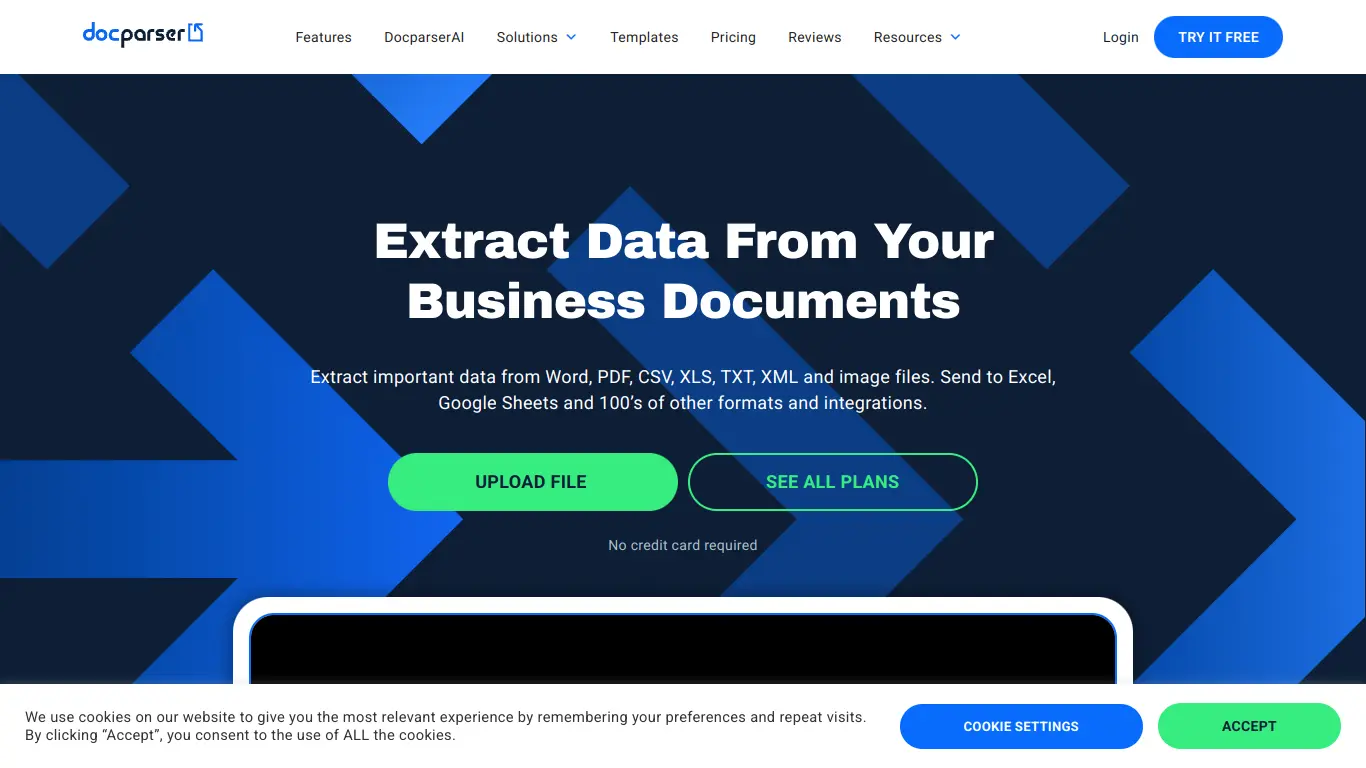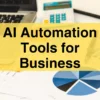Docparser automates document data extraction, eliminating manual entry while integrating with business systems for improved workflow efficiency.
Extracting valuable information from documents can feel like searching for a needle in a haystack. Whether you’re drowning in invoices, purchase orders, or any other document type, manually transferring that data into your systems is not just tedious—it’s a productivity killer. That’s where Docparser steps in, promising to transform how businesses handle document-based workflows. If you’ve ever found yourself copying and pasting data from PDFs or struggling with inconsistent document formats, this review will show you why Docparser might be the solution you’ve been looking for.
Introduction to Docparser
What is Docparser and its Purpose?
Docparser is a cloud-based document processing solution that extracts data from various document formats (primarily PDFs and scanned documents) and transforms it into structured data. Think of it as a digital assistant that reads your documents, identifies the important information, and organizes it exactly how you need it—all without manual data entry.
The platform’s core purpose is to automate document-based workflows by:
- Extracting specific data points from documents
- Converting unstructured document data into structured formats
- Routing the extracted data to your business systems
- Eliminating manual data entry and its associated errors
Unlike traditional OCR (Optical Character Recognition) tools that simply convert images to text, Docparser goes further by understanding document context and delivering only the data points you need, properly formatted and ready for use.
Who is Docparser Designed For?
Docparser serves a wide range of businesses that process document-based information regularly:
👩💼 Small to medium-sized businesses looking to automate manual data entry
👨💻 IT departments seeking to integrate document data with existing systems
🏢 Enterprise organizations needing to process high volumes of standardized documents
📊 Finance teams handling invoices, purchase orders, and financial statements
🏥 Healthcare providers managing patient forms and insurance documents
📦 Logistics companies processing shipping documents and delivery confirmations
The tool is particularly valuable for:
- Businesses receiving similar documents from multiple sources
- Companies with regular document processing needs
- Organizations looking to reduce data entry costs
- Teams focused on improving data accuracy and reducing human error
Getting Started with Docparser: How to Use It
Getting up and running with Docparser follows a straightforward process:
- Create an account: Sign up for a free trial at Docparser.com
- Create a document parser: Set up a specific parser for each document type you need to process
- Define parsing rules: Teach Docparser which data to extract using their visual rule editor
- Upload documents: Send documents through various methods (manual upload, email, API, cloud storage)
- Extract data: Docparser processes the documents based on your rules
- Access or export data: View extracted data in Docparser or send it to other systems
The platform operates on a “set it and forget it” principle. Once you’ve configured your parsing rules, Docparser handles the repetitive work automatically, allowing you to focus on using the data rather than extracting it.
Docparser’s Key Features and Benefits
Core Functionalities of Docparser
Docparser offers a robust set of features designed to streamline document processing:
1. Intelligent Document Recognition
- Uses OCR technology to read text from scanned documents
- Identifies document types automatically
- Handles various document formats (PDF, images, Word docs)
2. Flexible Data Extraction Rules
- Visual rule editor for creating extraction templates
- Zone-based extraction for consistent document layouts
- Table extraction capabilities for complex data structures
- Regular expression support for pattern matching
3. Data Processing Options
- Text formatting and cleaning tools
- Date and number standardization
- Multi-page document handling
- Batch processing capabilities
4. Integration Ecosystem
- REST API for custom integrations
- Native integrations with popular platforms (Zapier, Integromat, etc.)
- Data export in multiple formats (JSON, CSV, XML)
- Webhook support for real-time data transmission
5. Document Management
- Organized document storage
- Document version control
- Searchable document archive
- Document processing history
Advantages of Using Docparser
Implementing Docparser brings several significant benefits to organizations:
🕒 Time Savings: Reduces document processing time from hours to minutes
💰 Cost Reduction: Lowers operational costs associated with manual data entry
🎯 Improved Accuracy: Eliminates human error in data transcription
⚙️ Scalability: Handles growing document volumes without additional staffing
🔄 Process Standardization: Creates consistent data extraction regardless of document source
🔌 System Integration: Connects document workflows with existing business systems
📈 Data Accessibility: Makes document data immediately available for analysis and action
Main Use Cases and Applications
Businesses across industries leverage Docparser for various document-processing scenarios:
| Industry | Use Case | Example Documents |
|---|---|---|
| Finance | Invoice processing | Vendor invoices, expense reports |
| Healthcare | Patient data management | Intake forms, medical records |
| Legal | Contract analysis | Agreements, legal documents |
| Logistics | Shipping document handling | Bills of lading, customs forms |
| Real Estate | Property management | Lease agreements, inspection reports |
| Human Resources | Employee onboarding | Application forms, tax documents |
| Insurance | Claims processing | Policy documents, claim forms |
One particularly powerful application is in accounts payable departments, where Docparser can extract vendor information, line items, totals, and payment terms from invoices—then route this data directly to accounting systems, eliminating the need for manual data entry entirely.
Exploring Docparser’s Platform and Interface
User Interface and User Experience
Docparser’s interface strikes a balance between power and usability:
Dashboard Design
The main dashboard provides a clear overview of your document parsers, recent activities, and processing statistics. It’s organized with a clean layout that makes navigating between different functions intuitive.
Parser Creation and Management
The parser creation process guides users through setting up extraction rules step-by-step:
- Upload a sample document
- Define extraction zones or rules
- Test extraction results in real-time
- Refine rules as needed
- Save and deploy the parser
Document Processing Workflow
Once parsers are configured, the document processing workflow is seamless:
- Documents can be submitted through multiple channels
- Processing status is visible at a glance
- Extraction results are presented in a structured format
- Data can be reviewed and exported with a few clicks
Visual Rule Editor
One of Docparser’s standout features is its visual rule editor, which allows users to define extraction rules without coding. Users can:
- Draw zones around data to be extracted
- Use point-and-click interfaces to select tables
- Define data formats and validation rules
- Preview results in real-time
While the platform has a learning curve for complex document types, the interactive nature of the interface helps users get up to speed relatively quickly.
Platform Accessibility
Docparser is designed as a cloud-based solution with accessibility in mind:
Cross-Platform Availability
- Web-based interface accessible from any modern browser
- No software installation required
- Mobile-responsive design for on-the-go access
Document Submission Options
- Direct upload through web interface
- Email-to-parser functionality
- API-based submission
- Integration with cloud storage (Google Drive, Dropbox, etc.)
- Automated folder monitoring
User Management
- Role-based access controls
- Team collaboration features
- Activity logging and audit trails
The platform is accessible to users with varying technical backgrounds, though more advanced features like custom regular expressions and API implementation may require IT support for some organizations.
Docparser Pricing and Plans
Subscription Options
Docparser operates on a subscription model with tiered pricing based on document volume and features:


The free trial provides enough functionality to properly evaluate whether Docparser meets your specific document processing needs before committing to a paid plan.
Docparser Reviews and User Feedback
Pros and Cons of Docparser
Based on user reviews and platform analysis, here’s a balanced look at Docparser’s strengths and limitations:
Pros:
✅ Intuitive visual rule editor makes setup accessible to non-technical users
✅ Flexible extraction rules handle various document formats and layouts
✅ Robust table extraction capabilities for complex documents
✅ Strong integration options with popular business systems
✅ Reliable OCR performance even with imperfect document scans
✅ Responsive customer support team
✅ Regular platform updates and improvements
Cons:
❌ Learning curve can be steep for complex document types
❌ Pricing may be prohibitive for very small businesses
❌ Limited AI capabilities compared to newer document AI platforms
❌ Some advanced features require technical knowledge
❌ Processing very inconsistent documents may require multiple parser configurations
❌ Document volume limits can be restrictive on lower-tier plans
User Testimonials and Opinions
Docparser has garnered generally positive feedback across review platforms, with users particularly highlighting its time-saving capabilities:
“Docparser has saved our accounting team approximately 30 hours per week in manual data entry. The ROI was almost immediate.”
— Financial Controller at a mid-sized manufacturing company
“We process hundreds of varied supplier invoices monthly. After the initial setup period, Docparser has maintained a 95%+ accuracy rate, which is remarkable given the inconsistency of our incoming documents.”
— Accounts Payable Manager
“The learning curve was steeper than expected, but their support team was extremely helpful in optimizing our parsing rules. Now that it’s dialed in, the system runs like clockwork.”
— IT Director at a logistics company
On G2 and Capterra, Docparser consistently receives 4.5+ out of 5 stars, with particular praise for:
- Ease of setup
- Customer support
- Integration capabilities
- Time savings
- Data accuracy
Common criticisms center around:
- Initial configuration complexity
- Pricing structure
- Handling very irregular document formats
Docparser Company and Background Information
About the Company Behind Docparser
Docparser was founded in 2015 by a team with experience in business process automation and document processing. The company operates as part of the CloudSponge family of products, which focuses on creating tools that improve business efficiency.
Company Facts:
- Founded in 2015
- Headquartered in San Francisco with distributed team
- Privately held company
- Focus on document processing automation
- Serves clients globally across various industries
- Continues to operate as an independent product
The company has maintained a steady growth trajectory, focusing on product refinement rather than rapid expansion. This approach has resulted in a stable, reliable platform with a loyal customer base, particularly among SMBs and mid-market companies looking to automate document-based workflows.
Docparser’s development philosophy emphasizes practical solutions to common business problems rather than chasing the latest tech trends—a stance that has earned them a reputation for reliability in the document processing space.
Docparser Alternatives and Competitors
Top Docparser Alternatives in the Market
Several alternatives to Docparser exist, each with its own strengths and focus areas:
- Parseur – Similar email and document parser with a focus on simplicity
- Rossum – AI-powered document processing with a focus on invoices
- Nanonets – Machine learning-based document extraction platform
- Hyperscience – Enterprise-focused intelligent document processing
- Klippa – Document scanning and extraction with mobile focus
- ABBYY FlexiCapture – Enterprise-grade document processing solution
- Amazon Textract – AWS-based document analysis service
Docparser vs. Competitors: A Comparative Analysis
Here’s how Docparser stacks up against some of its key competitors:
| Feature | Docparser | Parseur | Rossum | Nanonets |
|---|---|---|---|---|
| Pricing (starting) | $39/month | $49/month | $800/month | $499/month |
| Setup Complexity | Medium | Low | Low | Medium |
| AI Capabilities | Basic | Basic | Advanced | Advanced |
| Visual Rule Editor | ✅ | ✅ | ✅ | ✅ |
| Table Extraction | ✅ | Limited | ✅ | ✅ |
| Integration Options | Extensive | Good | Extensive | Extensive |
| Enterprise Features | Limited | Limited | Extensive | Good |
| Mobile Support | Limited | Limited | Good | Excellent |
| Free Trial | 14 days | 14 days | Limited | Limited |
When to Choose Docparser:
- You need a balance of power and usability
- Your documents follow somewhat consistent formats
- You need strong table extraction capabilities
- Cost-effectiveness is important
- You prefer a visual rule setup over AI training
When to Consider Alternatives:
- For highly variable document formats, consider AI-focused solutions like Rossum or Nanonets
- For enterprise-scale deployment with advanced compliance, look at ABBYY or Hyperscience
- For simpler email parsing needs, Parseur may be more cost-effective
- If you’re deeply invested in AWS, Amazon Textract might integrate better with your stack
Docparser Website Traffic and Analytics
Website Visit Over Time
Docparser’s web traffic shows a steady growth pattern, reflecting increasing interest in document automation solutions:
- Approximately 50,000-75,000 monthly visitors
- 15-20% year-over-year traffic growth
- Seasonal peaks typically occurring during Q1 and Q4
- Strong visitor engagement with 3-4 page average session depth
Geographical Distribution of Users
Docparser’s user base is globally distributed, with particular concentration in:
- United States (35%)
- United Kingdom (12%)
- Canada (10%)
- Australia (8%)
- Germany (6%)
- Other European countries (15%)
- Rest of world (14%)
This distribution reflects the platform’s English-language focus while maintaining appeal in international markets.
Main Traffic Sources
Docparser acquires users through several key channels:
- Organic Search (45%): Strong SEO presence for document processing terms
- Direct Traffic (25%): Indicating brand recognition and repeat visitors
- Referral Traffic (15%): Integration partners and business software directories
- Paid Search (10%): Targeted campaigns for specific industries
- Social Media (5%): Limited but growing presence
The high proportion of organic traffic suggests that Docparser has established itself as a recognized solution in the document processing space.
Frequently Asked Questions about Docparser (FAQs)
General Questions about Docparser
Q: What types of documents can Docparser process?
A: Docparser works with PDFs, images (JPG, PNG, TIFF), and some text-based formats like Word documents. It’s particularly effective with structured or semi-structured documents like forms, invoices, and reports.
Q: How accurate is Docparser’s data extraction?
A: Accuracy depends on document quality and consistency. With well-structured documents, users report 95%+ accuracy rates. Variable formats may require multiple parser configurations to achieve optimal results.
Q: Is Docparser secure enough for sensitive documents?
A: Docparser uses secure HTTPS connections, encrypts data in transit and at rest, and provides options to delete documents after processing. They comply with standard security practices, though they’re not specifically HIPAA certified.
Feature Specific Questions
Q: Can Docparser extract data from tables in my documents?
A: Yes, Docparser offers robust table extraction capabilities that can identify and extract data from structured tables, even across multiple pages.
Q: How does Docparser handle varying document layouts?
A: You can create multiple parsing rules within a single parser to handle variations. For significant layout differences, you might need separate parsers for each document type.
Q: Can I process documents in languages other than English?
A: Yes, Docparser’s OCR engine supports multiple languages. However, the interface and support documentation are primarily in English.
Pricing and Subscription FAQs
Q: What happens if I exceed my monthly document limit?
A: Documents beyond your plan limit won’t be processed until you upgrade your plan or until the next billing cycle begins.
Q: Can I upgrade or downgrade my plan easily?
A: Yes, you can change plans at any time through your account dashboard. Upgrades take effect immediately, while downgrades apply at the next billing cycle.
Q: Is there a long-term contract requirement?
A: No, monthly plans can be canceled anytime. Annual plans offer a discount but require payment for the full year upfront.
Support and Help FAQs
Q: What support options are available?
A: All plans include email support. Higher-tier plans add priority support with faster response times. The platform also offers extensive documentation, video tutorials, and a knowledge base.
Q: Is there help available for setting up complex parsing rules?
A: Yes, Docparser offers onboarding assistance and can provide guidance on optimizing parsing rules. Enterprise plans include dedicated setup assistance.
Q: Can Docparser help with custom integrations?
A: While Docparser provides API access and documentation, custom integration development is generally the responsibility of the customer. They can recommend integration partners if needed.
Conclusion: Is Docparser Worth It?
Summary of Docparser’s Strengths and Weaknesses
Key Strengths:
- Powerful yet accessible visual rule editor that doesn’t require coding knowledge
- Excellent table extraction capabilities that handle complex data structures
- Flexible document input methods including email, API, and direct upload
- Strong integration options with popular business systems
- Cost-effective compared to enterprise document processing solutions
- Reliable performance with consistent document formats
Notable Limitations:
- Requires initial setup time and rule configuration for each document type
- May struggle with highly variable document formats without multiple parsers
- Limited AI-based learning compared to newer competitors
- Volume-based pricing can become expensive for high-document organizations
- User interface, while functional, isn’t as modern as some competitors
Final Recommendation and Verdict
Docparser delivers on its core promise: eliminating manual data entry from document workflows. It provides an excellent balance between power and usability, making document automation accessible to businesses without large IT departments or data science teams.
Docparser is ideal for:
- Small to medium-sized businesses processing recurring document types
- Organizations looking to automate accounts payable/receivable workflows
- Companies needing to extract data from forms consistently
- Teams that want a balance of control and automation in document processing
You might want to look elsewhere if:
- You need advanced AI capabilities for highly variable documents
- Your volume exceeds several thousand documents monthly (enterprise solutions may be more cost-effective)
- You require specialized compliance features (like HIPAA certification)
- You need extensive handwriting recognition capabilities
Overall rating: 4.5/5 stars ⭐⭐⭐⭐½
Docparser may not be the most cutting-edge solution in the market, but it delivers reliable document processing capabilities at a reasonable price point with minimal technical overhead. For most businesses looking to eliminate manual data entry, it represents an excellent starting point into document process automation—one that can deliver substantial ROI within weeks rather than months.


















